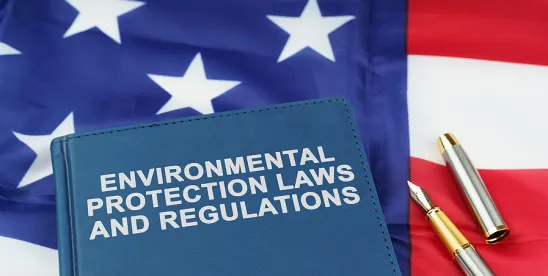On June 12, 2025, the U.S. Environmental Protection Agency (EPA) announced the availability of updated refined interim core maps that identify areas that EPA states are important to 12 threatened or endangered (listed) species and their critical habitats as designated by the U.S. Fish and Wildlife Service (FWS). These refined interim maps are based on information developed by FWS and were developed by EPA’s Office of Pesticide Programs (OPP), the Center for Biological Diversity (CBD), and Compliance Services International (CSI). The maps identify areas where listed species are likely to be located and areas where they are not, thus attempting to ensure that measures to protect listed species are only required in the areas where listed species are located. According to EPA, releasing these maps is “another important step to reduce potential impacts to farmers while continuing to protect endangered species.” EPA states these maps will be used for developing pesticide use limitation areas (PULA), which EPA notes will allow it to protect listed species from the use of pesticides through geographically specific mitigations.
According to EPA, when developing a PULA for a specific species, it starts by developing a core map identifying areas where listed species need additional protection. A core map may include information regarding:
- The species range;
- Its designated critical habitat; or
- Other locations where the species is known to occur.
If existing range maps are broad and include areas where a species is no longer thought to exist, the core maps would only include areas within the species range where the species are likely to occur. After developing a core map for a species, EPA states it would develop a PULA that accounts for pesticide movement from a use site, such as spray drift and run-off, by adding adjacent areas to the core map. Developing a core map or a PULA does not alter FWS’s range maps.
According to EPA, it released its mapping process in anticipation of public interest in developing species maps. If a draft map was not developed specifically by EPA, it will review the draft map to ensure that (1) the map and documentation are consistent with EPA’s process; (2) areas included or excluded from the map are consistent with the biology, habitat, and/or recovery needs of the species; (3) data sources are documented and appropriate; and (4) the Geographic Information System (GIS) data and mapping process are appropriate and are identifying the types of areas that the map developer is intending to identify.
The maps released are considered interim maps, which means that “the maps were developed using EPA’s process and that EPA has reviewed them and agree that the maps are reasonable and can be used to develop pesticide use limitation areas.” These maps will be considered final after review by FWS species experts.
Information on the interim core maps can be found on EPA’s “Process EPA Uses to Develop Core Maps for Pesticide Use Limitation Areas” and maps can be viewed here. EPA notes it expects that dozens more refined maps will be released within the next several months.
Commentary
The maps, and then the PULAs, are among the more potentially controversial elements of the developing EPA program. If the PULA is too large, there will be criticism that EPA has “over-regulated” restricting pesticide use providing no additional species protection. If the PULA is too small (e.g., missing some of the habitat that should be included), then there will be criticism that the EPA plan would not be sufficiently protective. The maps and how they are proposed, evaluated, and refined may be the most fluid element of EPA’s proposed label restrictions. Where EPA might propose restrictions in an area that some current product users believe is essential for their cropping system, the appropriateness of the PULA will be subject to more scrutiny and possible changes. Not unlike what EPA has done historically when human health “risk-cup” issues arose, EPA’s conservative assessments will be subject to refinement before final mitigation restrictions are imposed on the revised label as part of registration reviews.





 />i
/>i
